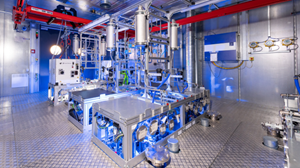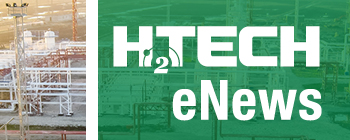News
BALIS test system components cross megawatt threshold for the first time
In the BALIS project, the German Aerospace Center (Deutsches Zentrum für Luft- und Raumfahrt; DLR) is building a unique test field to develop and test components of fuel cell electric propulsion systems for vehicles with power outputs of up to 1.5 megawatts. For the first time, researchers have succeeded in operating two of the most important components – the fuel cells and the electric motor – at more than one megawatt each.
"This is an important milestone in the set-up and commissioning of the test facility and the first generation of the fuel cell test system," explained project leader Cornelie Bänsch from the DLR Institute of Engineering Thermodynamics. Systems of this power class are not yet available on the market – the technical challenge lies in developing and integrating all the components so that they operate stably at high outputs of one megawatt or more. For this, DLR researchers electrically couple a total of twelve fuel cell modules, which all exchange information and interact. Each of these modules, in turn, consists of more than 400 individual fuel cells.
"To control this complex setup, we are developing sophisticated operating strategies," continued Bänsch. "Step by step, we want to operate the test system stably for longer periods and increase the output further above one megawatt. Once that is achieved, we will also run dynamic profiles – operating at varying high-power outputs for different lengths of time, just as in real-world conditions."
Powertrains for mobile, power-intensive applications. Fuel cell systems, such as those developed and tested by DLR with BALIS, could one day power ships, heavy-duty road vehicles or aircraft. Fuel cells running on H2 from renewable sources (green H2) could enable carbon dioxide-free and thus climate- and environmentally-compatible mobility. This technology could also reduce dependence on fossil fuels while strengthening the innovative capacity and competitiveness of Germany's high-tech industries.
The complex, modular BALIS test field enables researchers to comprehensively investigate individual components and even entire powertrains – for example in collaboration with aeronautics research institutes on propulsion systems. Due to its scale, flexible design and research methodology, the facility is unique worldwide. It is located on the innovation campus of the E2U Empfingen Development Centre for Environmental Technology.


